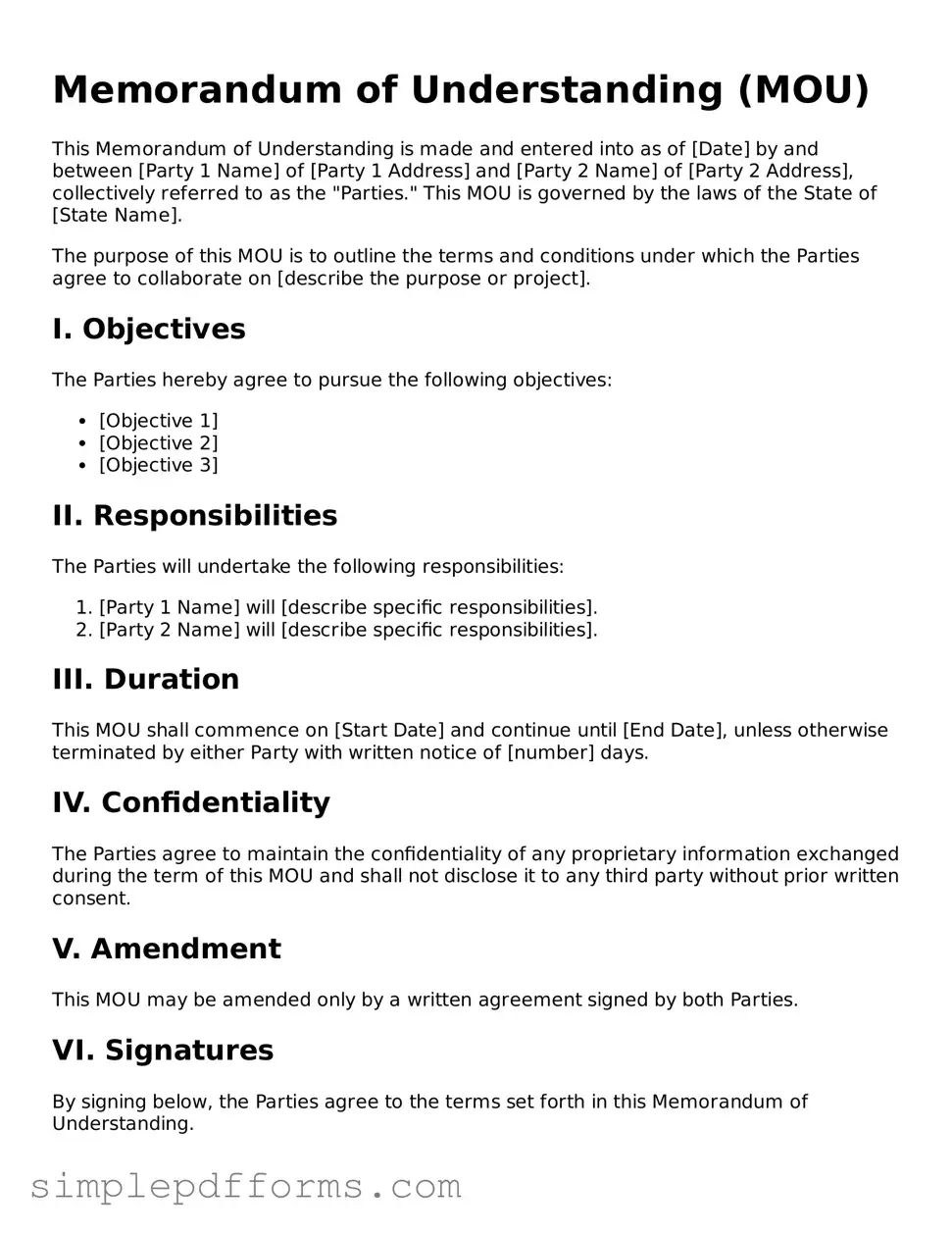Memorandum of Understanding (MOU)
This Memorandum of Understanding is made and entered into as of [Date] by and between [Party 1 Name] of [Party 1 Address] and [Party 2 Name] of [Party 2 Address], collectively referred to as the "Parties." This MOU is governed by the laws of the State of [State Name].
The purpose of this MOU is to outline the terms and conditions under which the Parties agree to collaborate on [describe the purpose or project].
I. Objectives
The Parties hereby agree to pursue the following objectives:
- [Objective 1]
- [Objective 2]
- [Objective 3]
II. Responsibilities
The Parties will undertake the following responsibilities:
- [Party 1 Name] will [describe specific responsibilities].
- [Party 2 Name] will [describe specific responsibilities].
III. Duration
This MOU shall commence on [Start Date] and continue until [End Date], unless otherwise terminated by either Party with written notice of [number] days.
IV. Confidentiality
The Parties agree to maintain the confidentiality of any proprietary information exchanged during the term of this MOU and shall not disclose it to any third party without prior written consent.
V. Amendment
This MOU may be amended only by a written agreement signed by both Parties.
VI. Signatures
By signing below, the Parties agree to the terms set forth in this Memorandum of Understanding.
Party 1:
___________________________
[Party 1 Name]
[Title, if applicable]
[Date]
Party 2:
___________________________
[Party 2 Name]
[Title, if applicable]
[Date]
